
Culture
23:03, 23-Mar-2018
Hong Kong artist devoted to depicting 'Wuxia' with ink brush
By Mao Dan
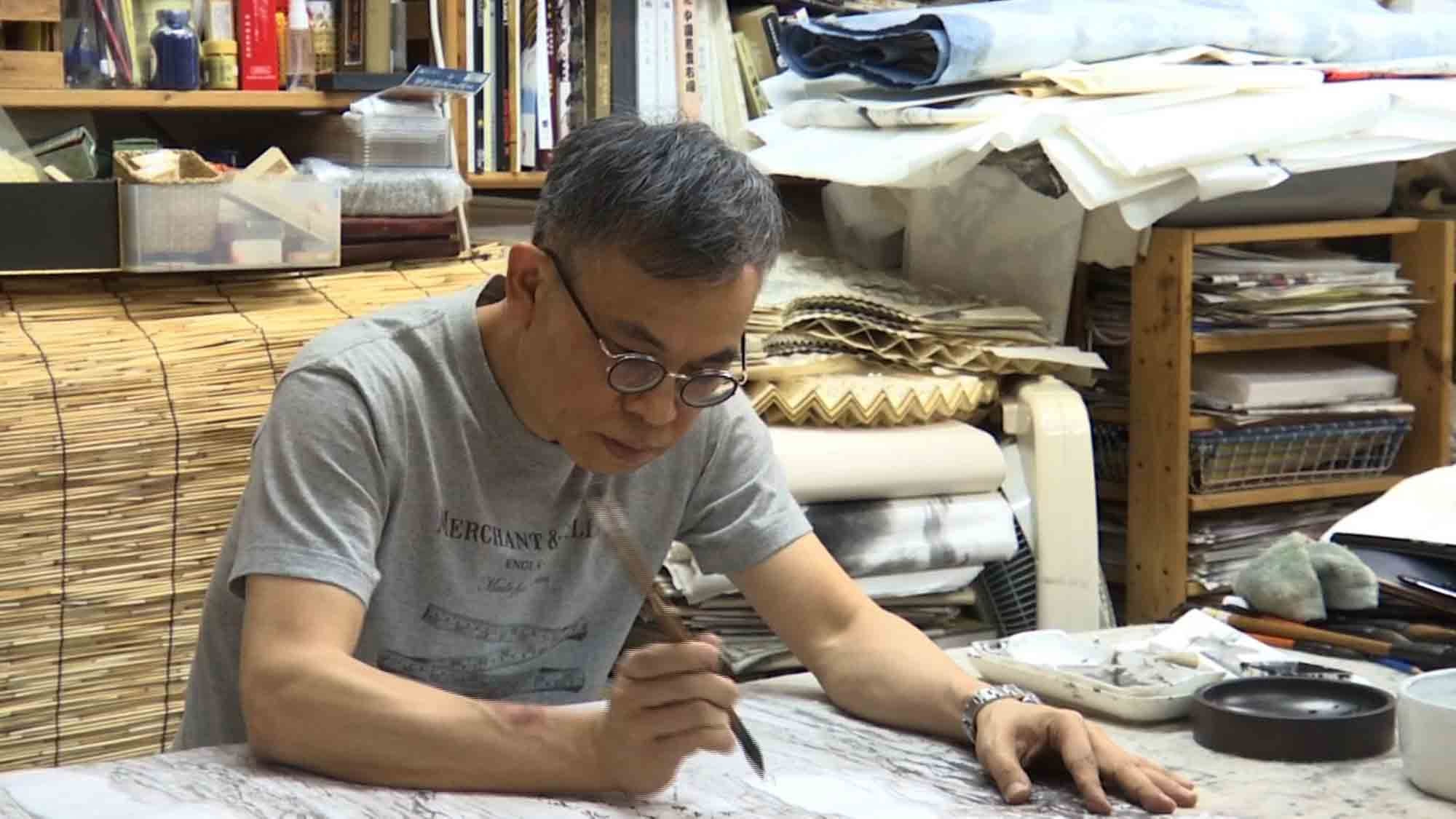
Lee Chi-ching is a Hong Kong artist who creates Chinese ink paintings, Western paintings, comics and illustrations. Lee began drawing comics and graphic novels in the 1980s as a comics illustrator.
His first attempt at depicting Jin Yong’s "Wuxia" characters was in 1995 when a Japanese publisher invited him to illustrate for the Japanese version of Jin Yong’s works. He spent two years on the project and gradually developed his own understanding of Jin Yong’s "Wuxia" novel.
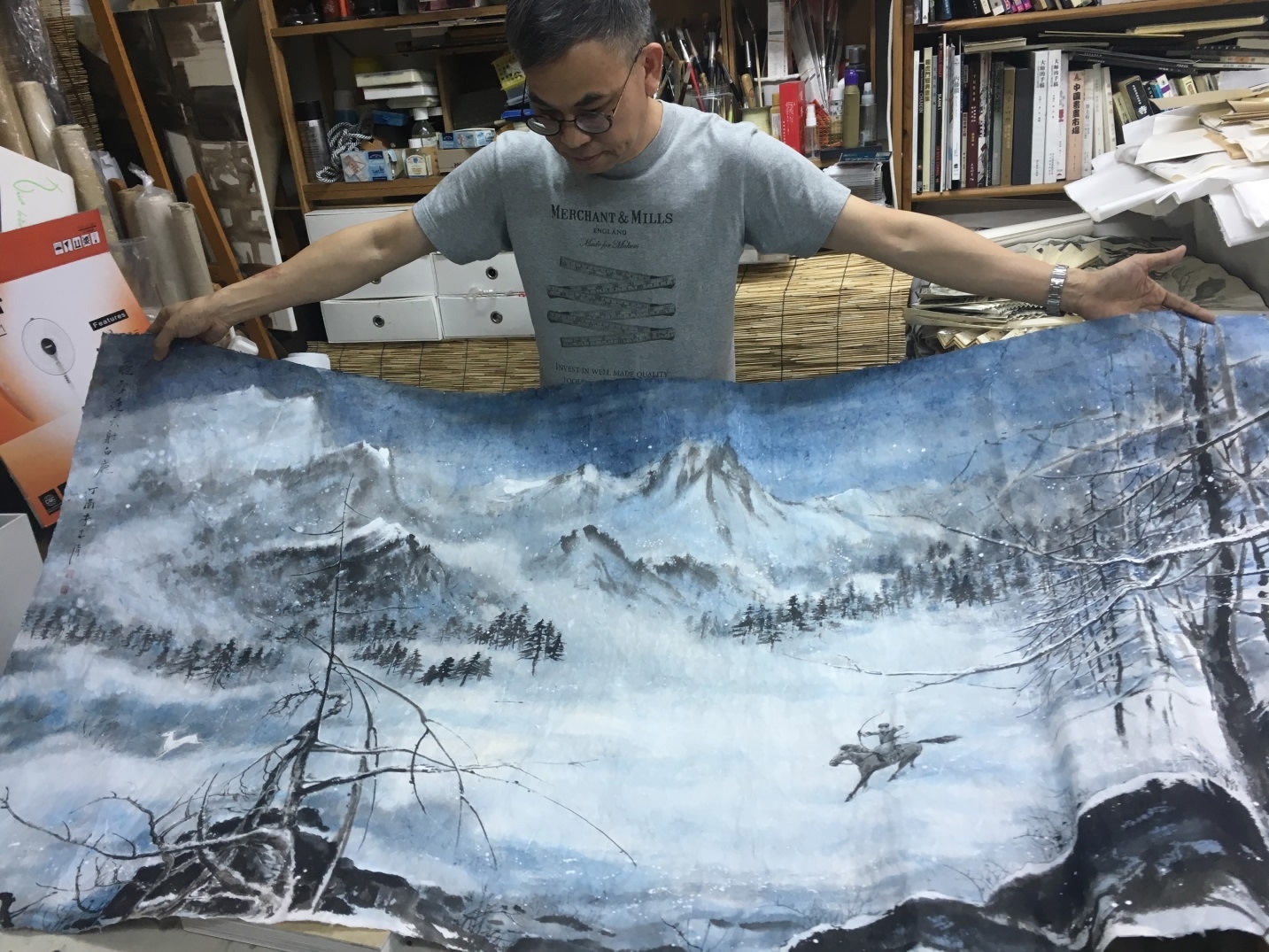
Lee Chi Ching displays his work. /CGTN Photo
Lee Chi Ching displays his work. /CGTN Photo
Lee became Louis Cha’s preferred illustrator and was encouraged by the author to turn his books into comics. He showed Cha some drafts of the main characters and was given complete freedom to execute Jin Yong novels with the understanding that the characters would not be changed too much.
Lee Chi-ching spent six years drawing comic versions of "Legend of the Condor Heroes" and "The Smiling Proud Wanderer," the most popular two of Jin Yong’s 15 "Wuxia" novels and short stories.
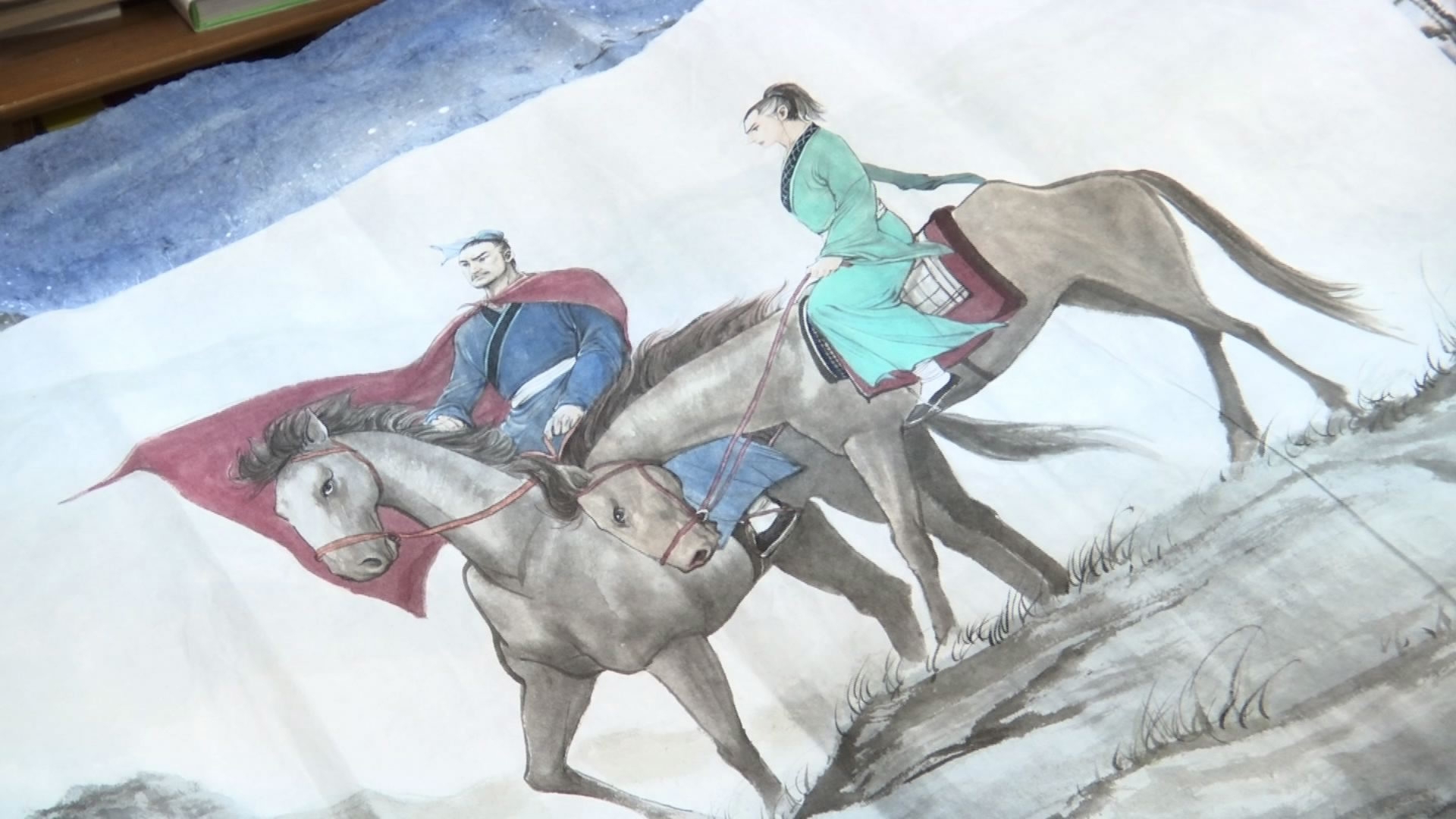
Lee Chi-ching’s watercolor painting of a scene from Jin Yong’s "Wuxia" novels / CGTN Photo
Lee Chi-ching’s watercolor painting of a scene from Jin Yong’s "Wuxia" novels / CGTN Photo
Like the original novels, the comics were popular across Asia and Europe. Lee said many publishers approached him even before he started the adaptation and wanted to buy copyrights from him. Today, his comics have been published in many languages such as Cantonese, Japanese, Thai, English and French.
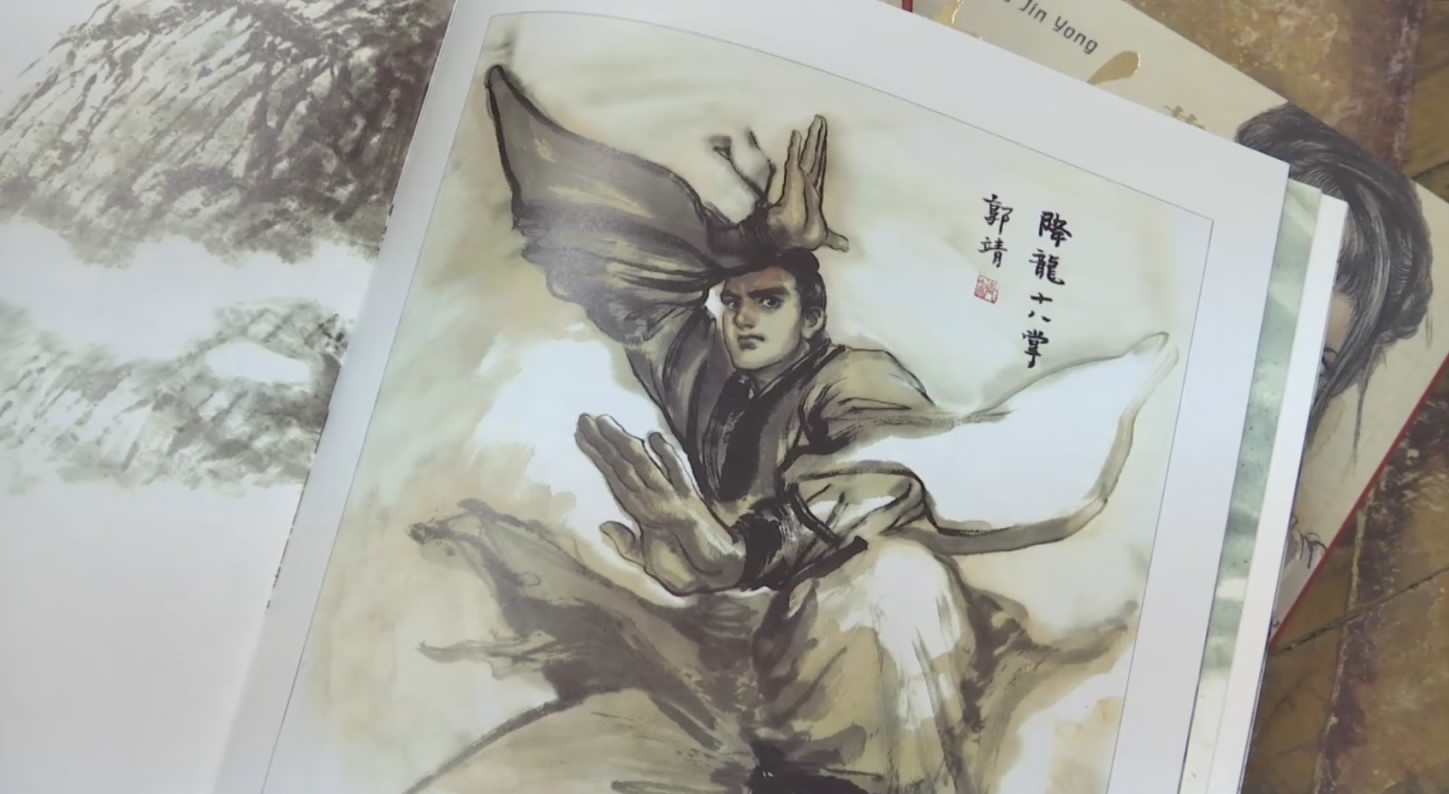
One of the initial draft Lee Chi-ching showing the main character of Louis Cha's "Wuxia" novel /CGTN Photo
One of the initial draft Lee Chi-ching showing the main character of Louis Cha's "Wuxia" novel /CGTN Photo
In Lee’s understanding, the appeal of the main characters in Jin Yong’s "Wuxia" novels is their spirit, instead of their looks or appearance. He was determined to create classic images for the "Wuxia" characters that would not feel outdated, even when people read the comics in ten or twenty years.
Lee said his comic books are different from other forms of adaptations such as movies or TV series. In comics, you must keep the original characters and the story line. If you change one part of a plot, the following stories will be totally different. He also pointed out that comics is a good platform to visualize the martial arts fights and animals including eagles, condors and sharks.
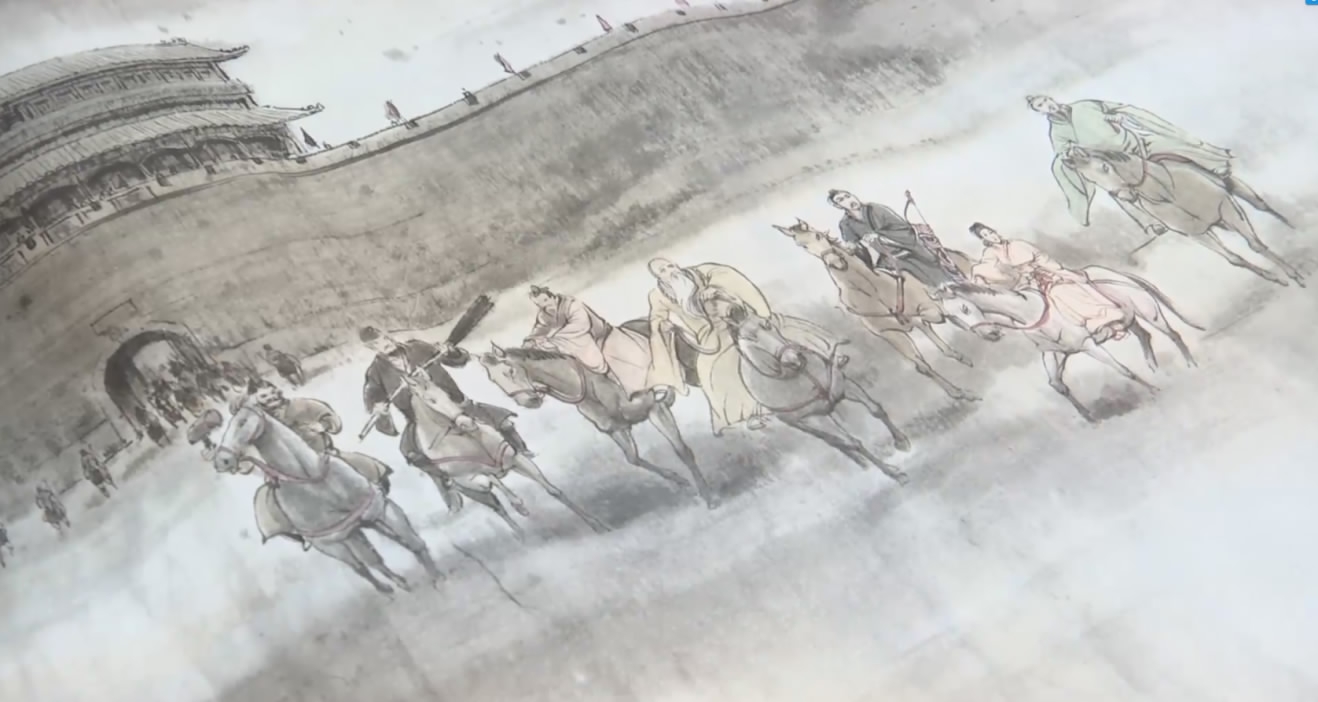
Lee Chi-ching’s watercolor of a fighting scene in "Legend of the Condor Heroes" / CGTN Photo
Lee Chi-ching’s watercolor of a fighting scene in "Legend of the Condor Heroes" / CGTN Photo
Now in his fifties, and having been doing "Wuxia" comics for more than two decades, Lee Chi-ching wants to move one step further towards integrating "Wuxia" elements into Chinese ink painting. He believes martial arts moves can highlight the tranquility of what are traditionally static and peaceful scenes.
Combining static and dynamic elements in a traditional Chinese ink painting is an innovative move. Lee said he had drawn for others for more than twenty years but now he wants to draw for himself and focus on something he always wanted to accomplish.

SITEMAP
Copyright © 2018 CGTN. Beijing ICP prepared NO.16065310-3
Copyright © 2018 CGTN. Beijing ICP prepared NO.16065310-3